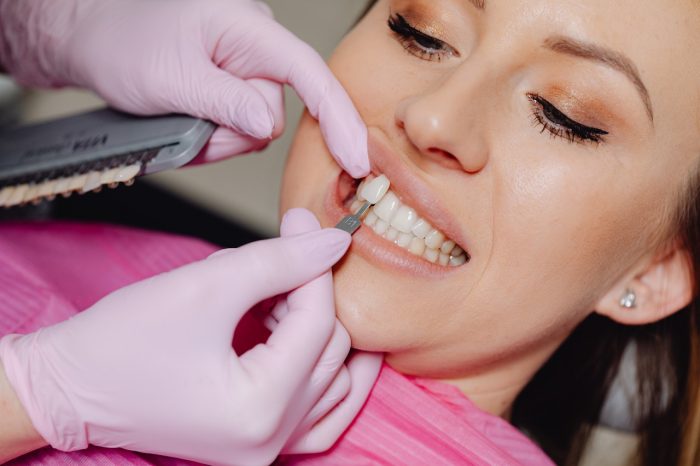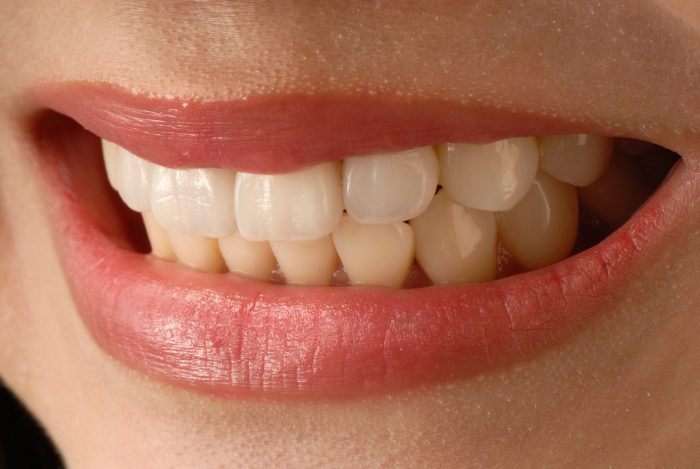Veneers are a great way to transform any smile, but they involve a few steps before achieving beautiful results. One of the questions that often comes up is, “Do you have to get your teeth shaved for veneers?” If you’re considering veneers, you’re probably wondering the same thing.

What are Veneers?
Veneers are thinly custom-made shells of tooth-colored materials developed to cover the front of your teeth. They are used to improve the appearance of your teeth so that you can have a beautiful smile. Veneers can be made from porcelain, composite resin, or both materials.
How Do They Work?
Your dentist will usually begin the veneer treatment by taking an impression of your teeth. From this, a lab will create a model of your teeth and design the veneers to fit your mouth perfectly. This ensures that the veneers are comfortable and look natural when done.
Once your veneers have been made, your dentist will place them on the front surface of your teeth. To secure the veneers, your dentist will use a special adhesive to bond them to your natural teeth. This is done to ensure that the veneers are strong and do not become loose or shift over time.
Veneers can remedy multiple teeth problems, such as chipped or stained teeth or even teeth that are slightly misaligned. The process is relatively painless and doesn’t require extensive tooth preparation, making it a popular choice for those wishing to improve the look of their smile.
Is Teeth Shaving Required for Veneers?

This depends on the type of veneers you’re getting and the condition of your teeth. Some types of veneers are thicker than others, so the amount of tooth structure removal required will vary.
If you’re getting traditional porcelain veneers, some tooth surfaces will likely need to be removed to make room for the veneers. This process is known as enamel reshaping or tooth shaving. The goal here is to create a smooth surface for the veneers to fit over, and it is done with a combination of a drill and an air abrasion device. But no worries, tooth shaving is typically painless and is done very carefully by a qualified professional.
On the other hand, tooth shaving is typically unnecessary if you’re getting no-prep veneers. No-prep veneers are ultra-thin veneers that require minimal tooth preparation and can be placed over your existing teeth without changing the original shape. Learn more about veneers without shaving your teeth.
What to Expect During the Teeth-Shaving Process
If you’re thinking of getting veneers, the first step is for your dentist to prepare your teeth for the veneers. To do this, your dentist will need to shave away a very thin layer of your enamel. This is normal and won’t cause any pain.
You won’t even need an anesthetic for the process. Your dentist will use a special drill which is much quieter and smoother than a regular dental drill. They’ll also focus on shaving away only the tiniest bit of your enamel, enough to make room for your veneers.
Afterward, your dentist will take an impression of your teeth. This will help them to create a custom veneer that perfectly fits your mouth. They might also take X-rays to look at the shape and placement of your teeth.
Once your veneers are ready, your dentist will attach them to your teeth. The process is quick and painless, and you’ll have the perfect smile once it’s done! You’ll need to be sure to practice good oral hygiene to make sure your veneers last.
Dental Care After Getting Veneers

If you want veneers to last, you must take care of them properly to avoid causing damage. That’s why a good dental care routine after getting veneers is your priority.
After getting veneers, the first step to good dental care is to brush twice daily. Make sure to brush around the edges of the veneers and the rest of your mouth. It’s also important to floss daily to remove any plaque and bacteria that can accumulate around the veneers.
Another step to take is to see your dentist regularly. Regularly scheduled visits will help to make sure that your dental care is on track and that your veneers are keeping up with your regular oral hygiene. Seeing your dentist will also allow them to catch any problems before they become major ones.
When eating and drinking, be careful with your veneers. Avoid chewing hard foods like ice or hard candy, as these can damage the veneers. Stick to soft foods and sip drinks through a straw to avoid contact with the veneers.
It’s also important to monitor for any changes to your veneers, such as discoloration or chips. If you notice any changes, be sure to contact your dentist right away.
Conclusion
Veneers are effective cosmetic dental procedures that can improve the appearance of your smile. During this procedure, only some people need to get their teeth shaved. If you have enough enamel on your teeth and the veneers aren’t too large or thick, your teeth may not need to be shaved down for a secure fit.
The best thing to do when determining if you need to get your teeth shaved for veneers is to consult your dentist. They’ll be able to evaluate your teeth and give you the best advice when it comes to the veneer procedure.










